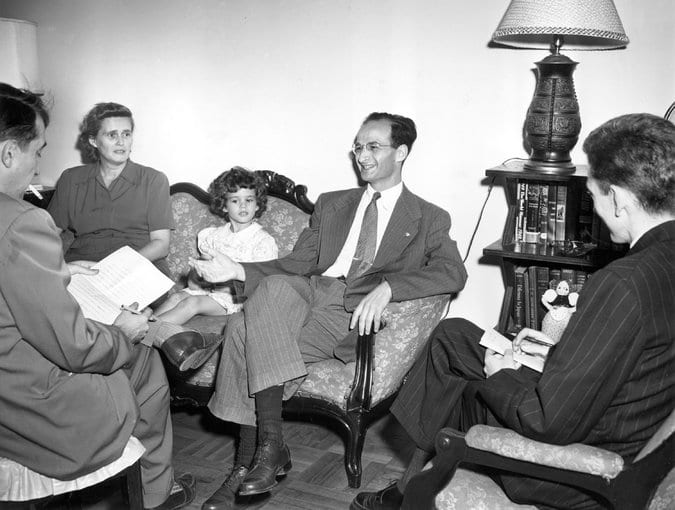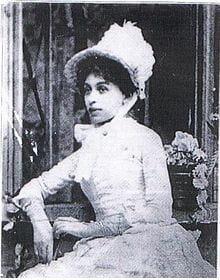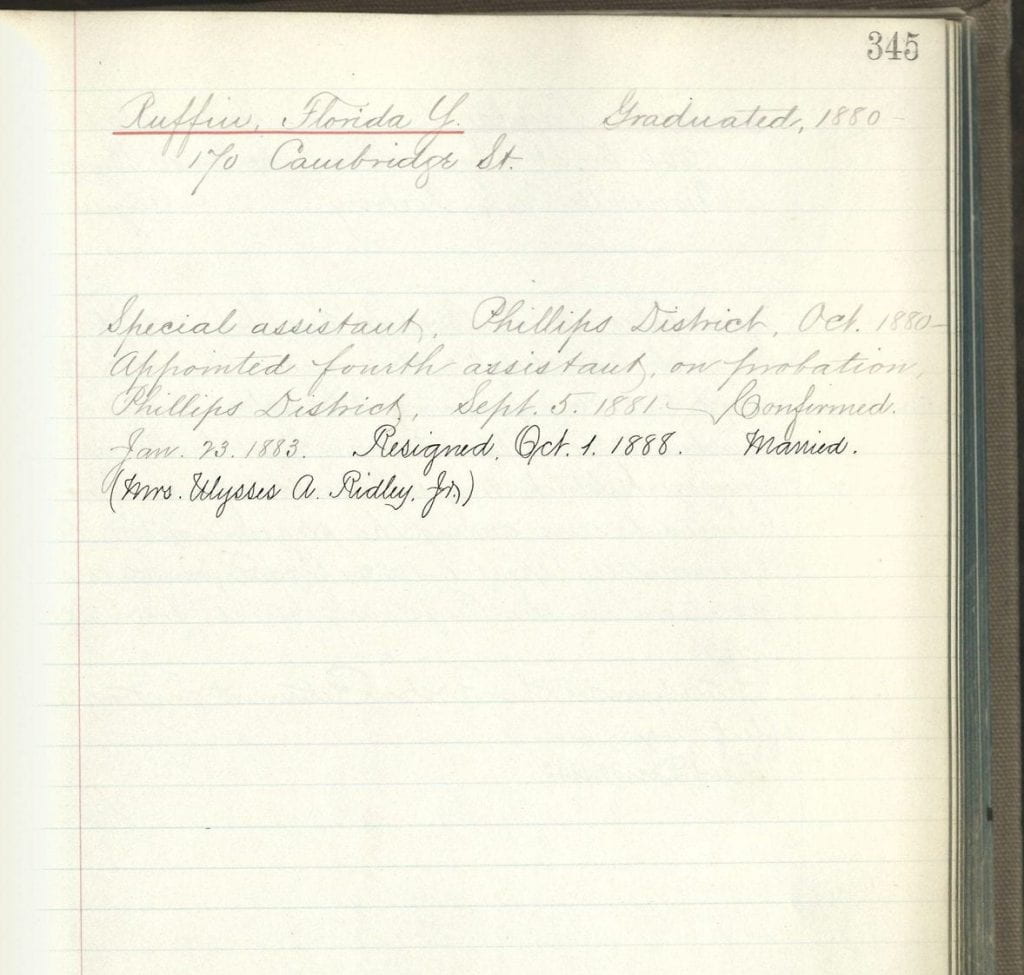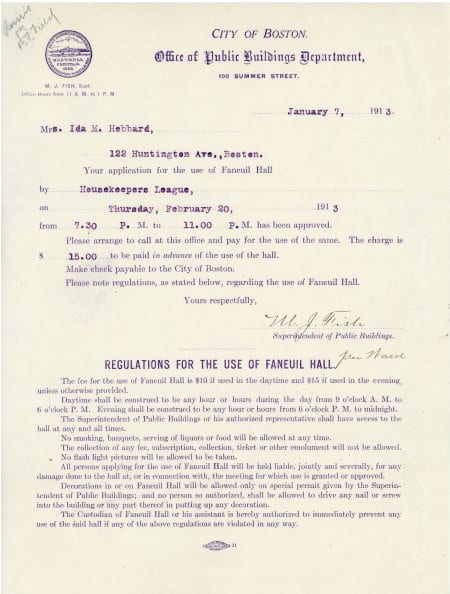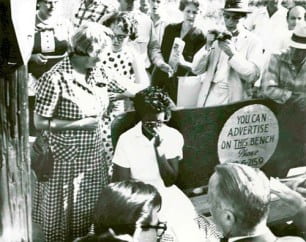By Corinne Zaczek Bermon
(Last of three-part series. Access Part I and Part II)
The family home in Beacon Hill and their summer home in Cornish, New Hampshire served as training grounds for Nichols as she came into her own as a peace activist. When Europe began to become embroiled in war, Rose Nichols banded together with other peace-minded women to form the Woman’s Peace Party in Boston in 1915. She organized lectures and fundraisers to broaden awareness of the anti-war movement. It was through this local organizational work that Nichols learned the skills she needed to enter the peace movement on a global stage. The focus of women’s activities turned toward political concerns with the establishment of current affairs discussion groups that Nichols and other women attended.
Along with the discussion groups, Rose and Margaret Nichols established the Cornish Equal Suffrage League on 1 December 1911, and it soon became the “second largest in the state, having at present sixty-eight members…[with] annual dues of fifty cents.”(( Letter, Rose Nichols to Elizabeth Homer Nichols, 1911. The Schlesinger Library.)) The women mainly met in the gardens designed by Nichols for her neighbors. Cornish suffrage leaders Lydia Parrish, Annie Lazarus and Rose Nichols used these gatherings to foster their personal causes, such as advancing the suffrage and peace movements.((Judith Tankard, A Place of Beauty: The Artists and Gardens of the Cornish Colony (Berkeley: Ten Speed Press, 2000), 16.))
Before the US entered the war, the women of the Cornish Colony began to explore how they could influence policymakers to avoid US intervention. In 1913, President Woodrow Wilson and his wife, First Lady Ellen Wilson, made Cornish the nation’s “summer capitol.”((Ibid, 34.)) Ellen Wilson spent time in Cornish without the President and wrote many letters to Wilson during that first summer in 1913 that described her busy social schedule with the women in the colony, including Nichols and Mabel Churchill, wife of American writer Winston Churchill.
In 1915, after Nichols established experience in organizing discussion groups in Cornish, New Hampshire, she began to work with the Woman’s Peace Party (WPP) in Boston as a nascent member. Nichols became the Chairmen of Meetings by 11 November 1915 and sent out letters to the membership regarding the organization of anti-war conferences around the state of Massachusetts. Nichols wrote that the aim of the conferences were to inform participants about international problems that are “pressing the civilized world” for a solution.((Letter, Nichols to Elizabeth Glendower Evans, 1915, SCPC.)) Nichols believed in the three tenets set forth by her fellow founding women: that women best understood the value of preserving human life; women were committed to providing individuals the best quality of life; and that women were able to resolve conflicts without ostracizing individuals or nations.((Linda Schott, “The Woman’s Peace Party and The Moral Basis for Women’s Pacifism” Frontiers: A Journal of Women Studies, vol 8, no 2, (Women and Peace 1985), 19. JSTOR. (3346048).))
The WPP and Nichols flexed their influential muscles again in March 1916 when several hundred Mexican guerrillas under the command of Francisco “Pancho” Villa crossed the US-Mexican border and attacked the small border town of Columbus, New Mexico. It was unclear whether Villa personally participated in the attack, but President Woodrow Wilson ordered the U.S. Army into Mexico to capture the rebel leader dead or alive. The WPP responded by

writing to President Wilson an address entitled “What the Woman’s Peace Party Thinks about the Mexican Crisis” that reprimanded Wilson for sending US troops 200 miles past the US-Mexico border after Pancho Villa disappeared. The WPP demanded President Wilson consent to mediation, withdraw the troops, and ask that Congress endorse President Wilson’s Mobile address that the US would never again take any land by conquest.((Memo to WPP members, WPP Massachusetts Collection, SCPC.))
Not long after the Mexican crisis, Nichols began shifting her efforts away from the local WPP and more on the international anti-war efforts after the United States entered the war in December 1917. Nichols began traveling more to Philadelphia and Washington, DC to meet with women who had been present at the first International Congress of Women that met in The Hague in 1915. In early November 1918, Lucia Ames Mead, chairman of the Massachusetts WPP, sent a letter to Jane Addams recommending

Nichols to the Zurich Congress: “As there is a vacancy, I want to propose Miss Rose Nichols of 55 Mt. Vernon St who is a very able woman whom Mrs. Andres and I think would be an acquisition. She is well-posted and is one of only a few with which [Wilson] is associated.”((Letter, Lucia Ames Mead to Jane Addams, November 1918, WILPF Collection, SCPC.)) Nichols, a longtime acquaintance of Addams, was accepted in 1918 as a delegate for the International Congress held in Zurich in 1919.
In 1919, Nichols went to the Paris Peace Conference before the Zurich Congress and sat in on all the public meetings after President Wilson refused to appoint a woman to the Peace Delegation. Wilson had written her to on 1 May that it would be impossible for him to secure her a spot in the plenary session as she
requested.((Letter, President Wilson to Rose Nichols. The Nichols House Museum and Archive.)) Nichols wanted to use the connection she made in the Cornish Colony with the President to attempt to exert political influence as the terms of peace were being negotiated.
The Women’s International League for Peace and Freedom (WILPF) officially declared itself an international women’s peace organization at the Zurich congress in opposition to the Treaty of Versailles set forth by Great Britain and the United States. The women argued the treaty would only lead to more war and they became disillusioned with world leaders’ statements about their ability to keep the peace. But in the hopes of preventing another conflict, the women of WILPF remained determined to raise their collective voices as women for international peace.

In WILPF Nichols continued organizing women as she did for the WPP. By 1920, Nichols was the chairman of both the Oriental Relations Committee and the Pan-American Relations Committee.((WILPF Meeting Minutes, 1920. SCPC.)) In 1921, the women of WILPF gathered together in Vienna, Austria for the bi-annual international congress and Nichols was in attendance as the head of the Pan American Committee. WILPF’s membership was growing in great strides in the lead-up to the Vienna Congress, due in part to Nichols’ recruitment efforts. Emily Green Balch noted that Nichols was “doing pretty well in Japan and Mexico” and was particularly pleased that Nichols had secured at least three Japanese students and two Chinese women to attend. ((Letter, Balch to Addams, Jane Addams Collection, SCPC.))
By 1926, Nichols’ active involvement in WILPF had begun to taper off. Although she was still a member until her death, her days of organizing had ended. Rose had turned fifty-four and wrote to her sister Margaret that she no longer had the vigor to continue.120 She remained a voting member until her death in 1960.
To learn more about the extraordinary life of Rose Standish Nichols, visit the Nichols House Museum.
Corinne Zaczek Bermon is earning her M.A. in History with a specialization in Archives. She earned a B.A. in American Studies in 2009 and a M.A. in American Studies in 2015 from University of Massachusetts Boston. This series of articles on Rose Standish Nichols represents her award winning research in American Studies. Currently, her work explores the social history of the Otis Everett family living in the South End of Boston in the 1850s. She is designing a digital exhibit that explores Victorian life for the merchant class conducting business in Boston and abroad through the Everett letters.



